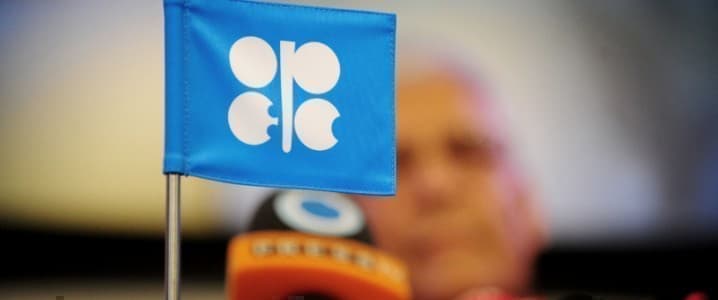Oil prices jumped on Monday morning, recuperating earlier losses, on the first trading day after OPEC+ eased its record oil production cuts by 2 million barrels per day (bpd), while surging COVID-19 cases have dampened the optimism for a swift oil demand recovery.
As of 10:57 a.m. EDT on Monday, WTI Crude was up 1.14 percent at $40.73 and Brent Crude up 0.64 percent at $43.80.
The easing of the 9.7-million-bpd production cuts of the OPEC+ group to a 7.7-million-bpd cut as of August 1 is weighing on market sentiment, even though OPEC’s de facto leader Saudi Arabia has said that it would keep its oil exports in August at the same level as in July, confirming earlier reports that it would not be rushing to boost supply to the market.
According to the monthly Reuters survey published on Friday, production at OPEC soared in July, after Saudi Arabia, the United Arab Emirates (UAE), and Kuwait ended their collective voluntary one-month additional cuts after June.
As per the Reuters survey, OPEC’s production averaged 23.32 million bpd in July, up by 970,000 bpd compared to June, which saw the lowest OPEC oil output since 1991. The three Arab Gulf allies pumped oil just below their quotas in July, compared to a collective additional 1-million-bpd cut in June. The laggards in compliance in all previous months and all previous deals – Iraq and Nigeria – didn’t make much progress on moving toward higher compliance, according to the Reuters survey.
The timing of OPEC+ relaxing the cuts coincides with growing concerns that resurging coronavirus cases in many parts of the world, including in the world’s top petroleum consumer, the United States, could stall the oil demand recovery.
“Speculators appear to be getting more nervous about the demand recovery, with the path much more gradual than market expectations coming into the second half of the year,” ING strategists Warren Patterson and Wenyu Yao said on Monday.
“This stall in demand comes at a time when the market is already starting to see supply coming back,” they said.
By Tsvetana Paraskova for Oilprice.com
More Top Reads From Oilprice.com:
- Saudi Arabia May Be Forced To Cut Oil Prices Once Again
- The World Is Facing A Solar Panel Waste Problem
- Why Iran And China Are Pushing Iraq To Boost Oil Production



















And while OPEC+ easing its production cuts might have a bearish impact on global supplies and prices, it will be more than offset by very bullish factors such as the continued rebound of China’s economy and the very steep decline in US oil production which will be struggling this year and the following years to even produce 6-7 mbd.
That is why oil prices are projected to hit $45-$50 in this half of the year and touch $60 in early next year.
Dr Mamdouh G Salameh
International Oil Economist
Visiting Professor of Energy Economics at ESCP Europe Business School, London